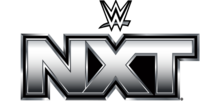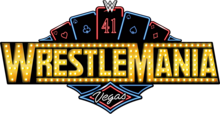
WWE's History of Video Games
With the release of the highly anticipated "WWE ’13" just around the corner, WWE.com takes a look back at the history and evolution of wrestling video games through the decades. Take a pixelated journey from the finest arcade action to the 8-bit glory of Nintendo to the mind-blowing graphics of today in this grapplin' gaming retrospective.
1983: Tag Team Wrestling (Arcade)
Documentation on the early days of wrestling video games is sketchier than Alex Rodriguez in the postseason, but “Tag Team” is believed to be the first such genre title. Right out of the gate, this grappling game (which also appeared under the name “The Big Pro Wrestling”) featured tag teams and sweet outside-the-ring battles.
1987: Pro Wrestling (Nintendo Entertainment System home video game, or NES for short)
Ranked among the greatest games of all time (across all platforms), “Pro Wrestling” allowed players to choose grapplers with distinct personas and special maneuvers. Instead of Ric Flair and Abdullah the Butcher, the game featured King Slender and the Amazon. People still play NES for this title, and nothing gets a controller flung quicker than a spin kick from Kin Com Karn.
1989: WWE WrestleMania (NES)
The first officially licensed WWE video game, this title debuted on NES and featured 8-bit Superstars that kinda resembled Andre, Hogan and Honky Tonk Man. In a genre first, players could unlock a “Rage” mode during beatdowns and “Hulk ups.”
1989: WWE SuperStars (Arcade)
This game was the first to boast character models that looked and moved like real-life Superstars. WWE talent even appeared to cut promos for the first time, with such vintage acts as “The Million Dollar Man” Ted DiBiase, Virgil, Andre the Giant, “Mean” Gene Okerlund, “Macho Man” Randy Savage and Miss Elizabeth making cameos.
1991: WWE Wrestlefest (Arcade)
Now a hugely popular app, in its days as an arcade game, “WrestleFest” rocked a Steel Cage Match, awesome graphics, a revolutionary grappling system and the first Royal Rumble mode, which let four players lock horns at once. But man, was it a quarter gobbler, encouraging players to pump in coinage to replenish energy mid-match.
1992: WWE Super WrestleMania (Super Nintendo Entertainment System home video game, or SNES for short, Sega Genesis)
The Sega version gave each of the eight grapplers special moves, and players could compete in “Championship” mode via a series of one-on-one matches. SNES lacked these features, but players had access to 10 Superstars, including Road Warrior Hawk and Road Warrior Animal!
1994: WWE Raw (SNES, Sega Genesis, Sega 32X, Sega Game Gear, Nintendo Gameboy)
The first Raw-branded video game cranked up the pain by expanding each Superstar’s repertoire to include full-on sets of signature moves. It also differentiated characters according to speed, strength, stamina and weight. Good news for Yokozuna fans!
1995: WWE WrestleMania: The Arcade Game (Arcade, SNES, Sega Genesis, Sega 32X, Sega Saturn, Sony PlayStation 1, PC)
“Arcade” ripped everyone’s favorite Superstars from the ring and plopped them into a bizarre “Mortal Kombat” world. Actual wrestling moves took a backseat to “Mortal Kombat”–style distance attacks, like The Undertaker’s flying spirits and Doink the Clown’s shocking buzzer.
1996: Power Move Pro Wrestling (Sony PlayStation 1, Sega Saturn)
As the first 3–D wrestling game in the U.S., “Power Move” actually let players maneuver around foes (not just up, down, left and right). It was also the first grappling game for Western audiences developed by Japan’s Yuke’s, the company responsible for the “SmackDown vs. Raw” franchise that fans love today.
1998: WWE War Zone (Sony PlayStation 1, Nintendo 64, Nintendo Gameboy)
Breaking more ground than Big Show during calisthenics, “War Zone” unleashed a first-ever “Create-A-Wrestler” mode, which let players engineer champions from scratch. This mode remained the single most popular feature in the “SmackDown vs. Raw” franchise.
2000: WWE SmackDown (Sony PlayStation 1)
The first grappling game of the new millennium marked the beginning of the Yuke’s/THQ development tag team. The game debuted a “Significant Season” mode, which encouraged gamers to play through WWE storylines.
2000: ECW Hardcore Revolution (Sony PlayStation 1, Nintendo 64, Sega Dreamcast)
For its leadoff at-bat with the ECW license, Acclaim took one of its older and more forgettable wrestling games, “WWE Attitude,” and slapped a new coat of “Extreme” paint on it. It wasn’t good, and it was only notable for its genre-first Mature rating.
2000: WWE SmackDown! 2: Know Your Role (Sony PlayStation 1)
Your dreams of winning the WWE Championship as Weirdo Beardo are finally attainable now that custom facial hair is a feature of the “Create-A-Wrestler” mode, along with the brand-new “Create-A-Taunt” system. Tag team matches benefitted from the invention of double-team moves that can be pulled off by trapping an opponent in your partner’s corner.
2000: WWE No Mercy (Nintendo 64)
Custom Divas were finally introduced as a part of the “Create-A-Wrestler” mode. “No Mercy” further distinguished itself with weaponry, allowing players to exchange foreign objects with the crowd and inflict damage with projectiles. What really set this game apart, though, was its revolutionary “Story” mode, which varied depending on the outcome of matches.
2002: WWE SmackDown! Shut Your Mouth (Sony PlayStation 2)
SmackDown and Raw universes collided in “Shut Your Mouth.” Its most significant change was a shift from the over-the-top, arcade-style fisticuffs to a slowed-down, more realistic and strategic style of WWE action.
2003: WWE SmackDown! Here Comes the Pain (Sony PlayStation 2)
Beatdowns were revolutionized with “Pain’s” new approach to character damage, which required players to punish specific body parts to inflict maximum injury. What’s more, Legends such as “Rowdy” Roddy Piper, “Superfly” Jimmy Snuka and Sgt. Slaughter re-entered the pixilated fold.
2004: WWE SmackDown! vs. Raw (Sony PlayStation 2)
The first wrestling game to go online, “SmackDown! vs. Raw” permitted players around the globe to compete in singles competition. Also, “Career” mode finally ditched the annoying subtitles in favor of full-on Superstar voiceovers.
2007: WWE SmackDown vs. Raw 2007 (Sony PlayStation 2, Sony PlayStation Portable, Microsoft Xbox 360)
The first grappler to appear on seventh-generation video game hardware, specifically the Xbox 360, “SvR2007” boasted an unprecedented helping of eye candy along with an evolved grappling system, which tied moves to the right analog stick instead of the buttons. The game also sounded the death knell for console-specific titles — “SmackDown vs. Raw 2007” became the sole WWE video game property.
2008: WWE SmackDown vs. Raw 2008 (Sony PlayStation 3, Sony PlayStation 2, Sony PlayStation Portable, Nintendo Wii, Nintendo DS, Microsoft Xbox 360)
Building off the previous year, the 2008 edition of the franchise took the analog system even further. The addition of the ECW locker room to the Raw and SmackDown rosters brought forth new faces and a gaggle of new weapons to wield in the ring. Plus, the “WWE 24/7” mode aimed to immerse gamers like never before in the lives of Superstars. Debuting on three all-new platforms,“SvR2008” is also notable for the first video game appearance of “WWE ’13” cover boy CM Punk.
2009: WWE SmackDown vs. Raw 2009 (Sony PlayStation 3, Sony PlayStation 2, Sony PlayStation Portable, Nintendo Wii, Nintendo DS, Microsoft Xbox 360)
For gamers, 2009 was the year of the tag team. Prominently overhauling the tag match and introducing the first-ever co-op story mode, “SvR2009”brought back a little bit of that old arcade flavor, making it once again fun to play video games with friends. If you preferred to fly solo, however, the game’s new “Road To WrestleMania” mode scratched that particular itch. Also making its first appearance in a video game was the Inferno Match, a fiery addition to the best-selling franchise, and the “Create-A-Finisher” feature.
2010: WWE SmackDown vs. Raw 2010 (Sony PlayStation 3, Sony PlayStation 2, Sony PlayStation Portable, Nintendo Wii, Nintendo DS, Microsoft Xbox 360)
Video game Superstar creators, rejoice! “SvR2010”ushered in a whole new creation system, completely updating and refining one of the franchise’s biggest selling points. “WWE Story Designer” mode allowed gamers to script their own storylines for Raw and SmackDown, a virtual dream come true for WWE Universe members. Throw in the debut of the “THQ Training Facility” tutorial mode and a new grappling system, and 2010 was a good year for gamers.
2011: WWE SmackDown vs. Raw 2011 (Sony PlayStation 3, Sony PlayStation 2, Sony PlayStation Portable, Nintendo Wii, Nintendo DS, Microsoft Xbox 360)
In addition to the inclusion of more than 70 Superstars and Divas on a deep roster, the 2011 edition introduced a new physics system that ensured the realistic use of foreign objects in matches. Hell in a Cell Matches also received a facelift, as grappling gamers could now utilize weapons hidden under the ring and competitors could be thrown through the Cell wall.
2011: WWE All Stars (Sony PlayStation 3, Sony PlayStation 2, Sony PlayStation Portable, Nintendo Wii, Microsoft Xbox 360)
Also in 2011, THQ brought the arcade back into the home, presenting players with a highly stylized, animated look and feel to go with all the in-ring action. Bringing to the WWE ring what “NBA Jam” brought to the basketball court, the trash-talking, move-flaunting “All Stars” was a big hit with fans of all ages. With a nice mix of present Superstars and Legends, the release delivered the perfect grappling game for the whole family.
2012: WWE ’12 (PlayStation 3, Nintendo Wii, Microsoft Xbox 360)
Promising to deliver a bigger, badder and better gameplay experience than ever before, “WWE ’12”exploded onto the scene to rave reviews from fans and critics alike. Reinventing its iconic “SmackDown vs. Raw” series, “WWE ’12” boasted all-new “Predator Technology,” which made for the most fluid and realistic animations ever seen in a WWE video game, improved artificial intelligence and an innovative “Breaking Point” submission system.
“WWE ’12” also featured an amped up “WWE Universe” mode, empowering players to determine the destiny of WWE‘s Superstars and Divas with storylines, matches, alliances and rivalries shaped by their decisions.
WWE Shows Latest Results
Raw results, Nov. 18, 2024: Solo Sikoa helps Bronson Reed steal a victory from Seth Rollins
Full ResultsSmackDown results, Nov. 15, 2024: Roman Reigns is left looking for answers after Paul Heyman's cell phone is disconnected
Full ResultsWWE NXT results, Nov. 19, 2024: Chase U is no more as Ridge Holland becomes No. 1 Contender to the NXT Title
Full Results




































